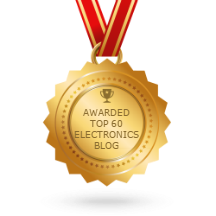A logic gate is an idealized or physical device implementing a Boolean function, that is, it performs a logical operation on one or more logic inputs and produces a single logic output. Depending on the context, the term may refer to an ideal logic gate, one that has for instance zero rise time and unlimited fan-out, or it may refer to a non-ideal physical device (see Ideal and real op-amps for comparison).
Logic gates are primarily implemented using diodes or transistors acting as electronic switches, but can also be constructed using electromagnetic relays (relay logic), fluidic logic, pneumatic logic, optics, molecules, or even mechanical elements. With amplification, logic gates can be cascaded in the same way that Boolean functions can be composed, allowing the construction of a physical model of all of Boolean logic, and therefore, all of the algorithms and mathematics that can be described with Boolean logic.
Logic circuits include such devices as multiplexers, registers, arithmetic logic units (ALUs), and computer memory, all the way up through complete microprocessors, which may contain more than 100 million gates. In practice, the gates are made from field-effect transistors (FETs), particularly MOSFETs (metal-oxide-semiconductor field-effect transistors).
Logic Gate:
Logic Gates perform basic logical functions and are the fundamental building blocks of digital integrated circuits. These are process signals which represent true or false. Normally the positive supply voltage +Vs represents true and 0V (Zero) represents false. Other terms which are used for the true and false states are shown in the table on the right. It is best to be familiar with them all.
Gates are identified by their function: NOT, AND, NAND, OR, NOR, EX-OR and EX-NOR. Capital letters are normally used to make it clear that the term refers to a logic gate.
Note that logic gates are not always required because simple logic functions can be performed with switches or diodes:
- Switches in series (AND function)
- Switches in parallel (OR function)
- Combining IC outputs with diodes (OR function)
Logic Gate Symbols:
An AND gate can have two or more inputs. A dot (.) is used to show the AND operation i.e. A.B.
Keep in mind that this dot is sometimes omitted i.e. AB




























